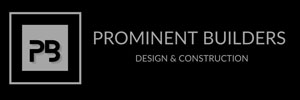As if selecting the latest features for your home construction or renovation project wasn’t confusing enough, now you must choose the type of floors you want throughout your home. Because it’s the most-used surface in your home, you will want to select flooring that fits your budget, lifestyle, and personal tastes. In this blog post, we will go through the different flooring options. We will also discuss how allergens and other environmental factors may impact your decisions.
The More Popular Floor Types for Homes
Popular flooring options include wood, engineered materials, vinyl, tile, stone, and carpet. Within each of these types, there are so many styles and patterns from which to choose. Here’s a little bit of information on each of the flooring options:
- Hardwood – This type of flooring is constructed of solid wood ranging from maple, oak, walnut, or cherry. While it is a more expensive flooring material, it’s also quite beautiful and durable. Be prepared for regular maintenance to keep it looking its best. It can even be refinished multiple times, lending to its longevity. Because it is susceptible to moisture damage, it is unsuitable for bathrooms, laundry rooms, and basements.
- Engineered Wood – If you want the look of real wood without the high price, engineered wood floors may be a good option. It’s manufactured with a thin hardwood layer bonded over a plywood substrate. Like hardwood, it is durable and will last a long time with proper upkeep. Unlike hardwood, it cannot be refinished, and it’s also not fade-resistant.
- Laminate – If you don’t want carpet but the idea of investing in an expensive hardwood is unappealing, you may want to consider laminate flooring. It’s made from a particleboard wood base topped by wood or a photo of tile beneath a protective layer of plastic. It comes in many styles and colors. It’s also easy to clean and scratch-resistant. It does have some cons in that it is susceptible to moisture damage, doesn’t look and feel like wood, and chips easily.
- Vinyl –Made of plastic, vinyl flooring is available in planks, tiles, or sheet form. It’s often used in kitchens, bathrooms, laundry rooms and basements because of its durability. Not only that, but it’s water and fade-resistant and easy to maintain.
- Tile – There are many beautiful styles, colors, and patterns for tile floors. The most common tiles used in kitchens and bathrooms are ceramic and porcelain. While it’s waterproof and durable, it is expensive to install and requires much prepping before installation.
- Stone Flooring – Some homeowners are selecting stone as a flooring option for a bold and elegant look. You can choose from granite, marble, travertine, and sandstone. It lasts a long time and is quite durable. The type of stone selected will determine the care needed to keep it looking its best. Like tile, it is expensive to install and requires much work to prepare the area before installation.
- Carpet – This is one of the most cost-effective flooring options today. You can select from multiple colors, materials, and designs. It’s visually and physically warming to a room and helps with soundproofing.
Indoor Allergies and Flooring
If you have problems with indoor allergies, you may want to take your time to research and select the type of material that would cause fewer respiratory issues. For example, tile and stone are good choices because they are easy to clean and don’t trap dust mites, pollen, and dander. The least allergy-friendly flooring option would be carpeting. You will want to steer clear of soft surfaces like carpeting and select more natural materials like hardwood.
Don’t stress out over building or renovating a home. The Bergen County, NJ, professionals at Prominent Builders and Designs can assist with each phase of your project from design through installation. Give us a call today to schedule a consultation.

